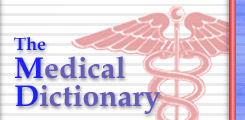In 1996 and 1997, Baltimore, Maryland, had the highest rate for primary and secondary syphilis among U.S. cities (1,2). From 1993 to 1996, the rate for congenital syphilis (CS) in Baltimore increased from 62 to 282 per 100,000 live-born infants. To assess the magnitude of the syphilis epidemic in pregnant women and to identify ways to improve CS prevention, the Baltimore City Health Department (BCHD), the Maryland Department of Health and Mental Hygiene (DHMH), and CDC analyzed CS surveillance data for and reviewed medical records of pregnant women with syphilis. This report summarizes the results of this investigation, which indicated that 90% of cases could have been prevented by adequate prenatal care and more timely syphilis screening and treatment.
BCHD surveillance data and hospital discharge records were reviewed to identify women who had active syphilis during pregnancy and deliveries during January 1, 1996-March 30, 1997, and to assess completeness of surveillance data. To identify factors associated with CS and possible prevention strategies, medical records of pregnant women with syphilis and of their infants were reviewed, and mother-infant pairs were classified as CS cases according to the CDC surveillance case definition for CS (3) or as controls.
The CS rate in Baltimore increased from 62 per 100,000 live-born infants in 1993 to 282 in 1996. The increase among blacks was from 113 in 1993 to 564 in 1996 (Figure 1). During the study period, 90 women were identified who had active syphilis during pregnancy and who delivered infants. Of these, 62 (69%) women delivered infants with illnesses meeting the CS case definition; 28 (31%) women (controls) who were adequately treated for syphilis during pregnancy delivered infants who did not have CS. All infants with CS had been reported to BCHD. Of the 62 mothers of case-patients, four (7%) delivered stillborn infants. Mothers of case-patients and mothers of controls had similar demographic characteristics. Of the 90 women, the mean age was 26 years; 86 (96%) were black; 72 (80%) were single; 78 (87%) were unemployed; 28 (31%) had multiple addresses during pregnancy; and six (11%) of 56 mothers tested were HIV-infected. A total of 54 (60%) had either a positive toxicology screen or self-reported cocaine or hero in use during pregnancy; 24 (44%) of 54 had a record of substance-abuse treatment. Of those women tested by toxicology screen at delivery, nine (23%) of 40 mothers of case-patients and 10(53%) of 19 mothers of controls were positive for cocaine (p<0.03), four (10%) of 40 mothers of case-patients and one (5%) of 19 mothers of controls were positive for heroin, and 13(33%) of 40 mothers of case-patients and one (5%) of 19 mothers of controls (p<0.05) were positive for both drugs.
Mothers of case-patients and mothers of controls differed with respect to several prenatal care-related factors. Of the 58 mothers of case-patients, 43 (74%) had a third trimester diagnosis of syphilis compared with eight (29%) of 28 mothers of controls (p<0.01). Records of mothers of case-patients were more likely than mothers of controls to include documentation suggesting their pregnancy was unintended (37% versus 14%) (p<0.05). Among the 90 mothers, three were allergic to penicillin; none was desensitized and treated with penicillin during pregnancy (4). Therefore, the three mothers delivered infants who had illnesses meeting the CS case definition.
Thirty-six (58%) mothers of case-patients had no prenatal care or initiated prenatal care late in the third trimester. Approximately 80% of these women had missed opportunities to be reached and referred during pregnancy: six (17%) had spent time in jail; 22 (61%) had contact with a social worker, and at least 16 (44%) were clients of other social service agencies.
Missed prevention opportunities also were identified for most of the mothers of case-patients who had had early prenatal care. At the time of this investigation, Maryland law required syphilis screening of all pregnant women in the first and third trimesters, but there was no stipulation on the timing of the third trimester test. Of the 54 case-patients whose mothers had entered prenatal care by 28 weeks' gestation. syphilis screening and treatment at 28 weeks' gestation and other routine serologic testing could have prevented 18 (29%) of the 62 cases. An additional six (10%) case-patients were infected too late in pregnancy to prevent CS, including two who sero-converted after delivery.
Reported by: P Beilenson, MD, D Rose, MD, D Dunning, MPH, W Brathwaite, K West, F Meyers, Baltimore City Health Dept; J Krick, PhD, D Akers, R Miazad, MD, A Bhatia, PhD, D Dwyer, MD, State Epidemiologist, Maryland Dept of Health and Mental Hygiene. Epidemiology and Surveillance Br and Program Development and Support Br, Div of Sexually Transmitted Disease Prevention, National Center for HIV, STD, and TB Prevention; and an EIS Officer, CDC.
Editorial Note: Congenital syphilis is one of the most devastating yet preventable outcomes of a sexually transmitted disease (STD). Fetal complications include spontaneous abortions and stillbirths, and infant complications include multisystem disorders and death. Treatment of maternal syphilis with penicillin is highly effective in preventing CS (5). However, infants born to inadequately treated mothers can require parenteral therapy at an estimated cost of more than $12,000 per infant (6). The findings in this report indicate that adequate prenatal care and timely syphilis screening and treatment could have prevented 90% of CS cases that occurred in Baltimore during the study period.
The CS epidemic in Baltimore occurred despite dramatic declines in syphilis incidence in the United States. Nationally, CS declined 72% from a peak of 107 cases per 100,000 live-born infants in 1991 to 30 in 1996; in Baltimore, the rate was nearly 10-fold higher in 1996 than the national rate. Among blacks, the national rate was 128 per 100,000 live-born infants in 1996 compared with 564 in Baltimore. The large racial differential in CS rates suggests that other factors for which race is often a proxy (e.g., differential access to and quality of health-care services) may be contributing to this epidemic and differentially affecting blacks (7).
The prevalence of drug use was high among all women who had syphilis during pregnancy. However, in this investigation, the type of drugs used differed between mothers of case-patients and mothers of controls. For example, heroin use, either alone or in addition to cocaine use, was significantly associated with CS, and cocaine use alone was not significantly associated with CS among this group of women who had syphilis during pregnancy. These results may not be generalizable to other populations.
The findings in this report are subject to at least two limitations. First, most of the data were gathered through record review. As a result, key variables (e.g., unintended pregnancy and detention history) may be underreported. Second, because spontaneous abortions were not included, stillborn infants may be underascertained. Despite these limitations, the finding that lack of adequate prenatal care was associated with CS is consistent with other studies (8,9).
Although reducing the risk for CS will ultimately depend on control of adult syphilis, prevention specific to pregnant women with active syphilis is feasible. In response to this epidemic, BCHD has alerted prenatal-care providers and worked with other health-care service providers to initiate screening and treatment programs for women of reproductive age. Through collaborative efforts of DHMH, BCHD, the Maryland Department of Public Safety and Correctional Services, and CDC, a rapid screening and treatment program for detainees and female arrestees was initiated at the Baltimore Central Booking Intake Center. Such interventions have been successful in other settings (10). STD clinical services have been strengthened at public STD clinics, including additional clinicians and other staff. In addition, the Maryland regulation on syphilis testing during pregnancy was amended in January 1998 to require a third trimester screening test at 28 weeks' gestation or the first visit thereafter to ensure diagnosis in tim e to prevent perinatal transmission. A Baltimore City Commissioner's order was also issued mandating syphilis screening at delivery.
References
1. CDC. Sexually transmitted disease surveillance, 1997. Atlanta, Georgia: US Department of Health and Human Services, Public Health Service, CDC, 1998.
2. CDC. Outbreak of primary and secondary syphilis--Baltimore City, Maryland, 1995. MMWR 1996;45:166-9.
3. CDC. Case definitions for infectious conditions under public health surveillance. MMWR 1997;46(no. RR-10).
4. CDC. 1998 guidelines for treatment of sexually transmitted diseases. MMWR 1998;47(no. RR-1).
5. Schulz KF, Murphy FK, Patamasucon P, Meheus AZ. Congenital syphilis. In: Holmes KK, Mardh PA, Sparling PF, et al., eds. Sexually transmitted diseases. 2nd ed. New York, New York: McGraw-Hill, Inc., 1990:821-42.
6. de Lissovoy G, Zenilman J, Nelson KE, Ahmed F, Celentano DD. The cost of a preventable disease: estimated U.S. national medical expenditures for congenital syphilis, 1990. Public Health Rep 1995;110:403-9.
7. Osborne NG, Feit MD. The use of race in medical research. JAMA 1992;267:275-9.
8. Webber MP, Lambert G, Bateman DA, Hauser WA. Maternal risk factors for congenital syphilis: a case-control study. Am J Epidemiol 1993;137:415-22.
9. Mobley JA, McKeown RE, Jackson KL, Sy F, Parham JS, Brenner ER. Risk factors for congenital syphilis in infants of women with syphilis in South Carolina. Am J Public Health 1998;88:597-602.
10. CDC. 1998 syphilis screening among women arrestees at the Cook County Jail--Chicago, 1996. MMWR 1998;47:432-3.
COPYRIGHT 1998 U.S. Government Printing Office
COPYRIGHT 2004 Gale Group


